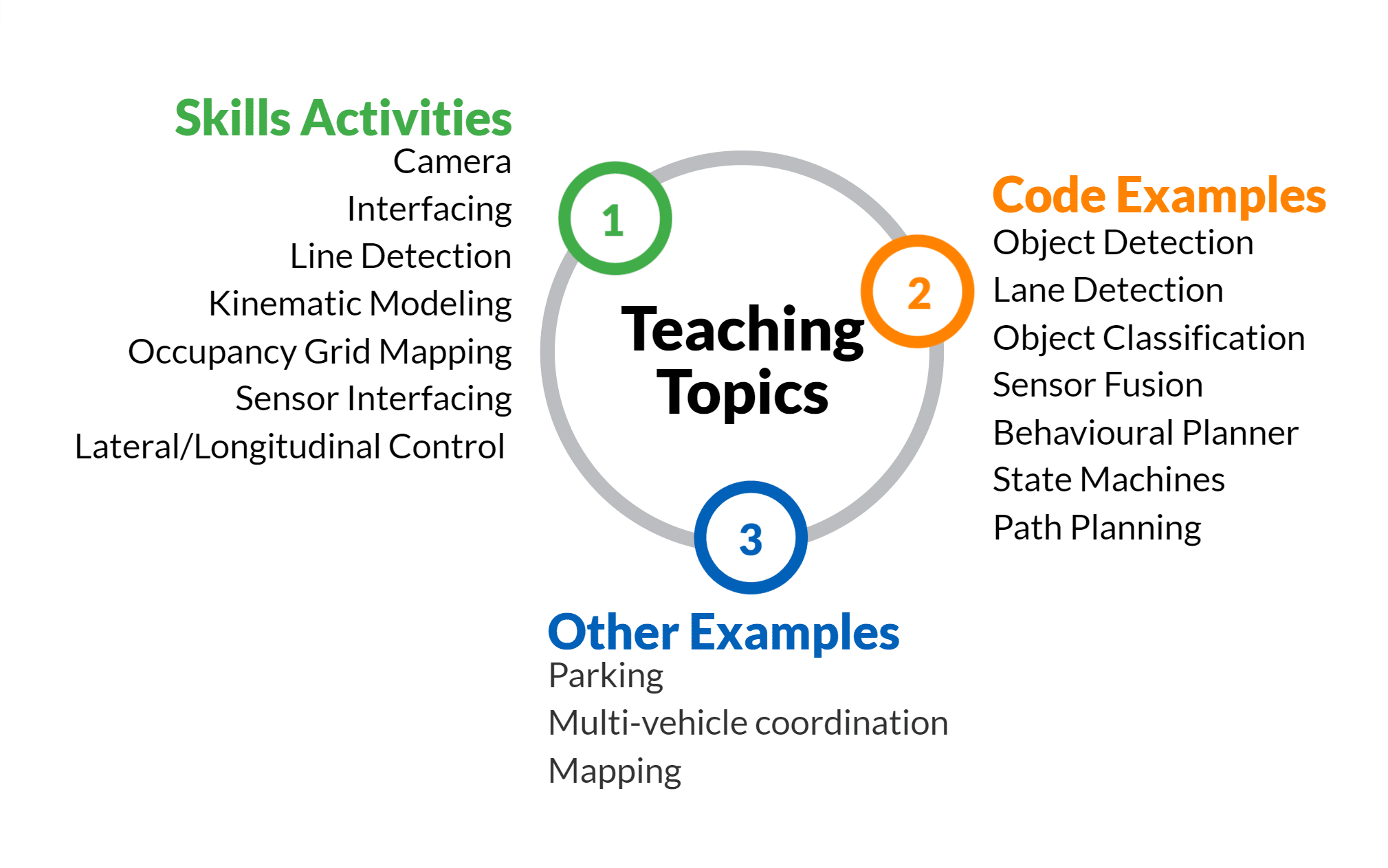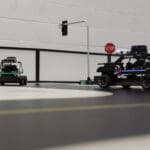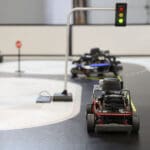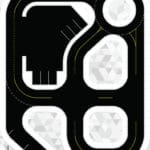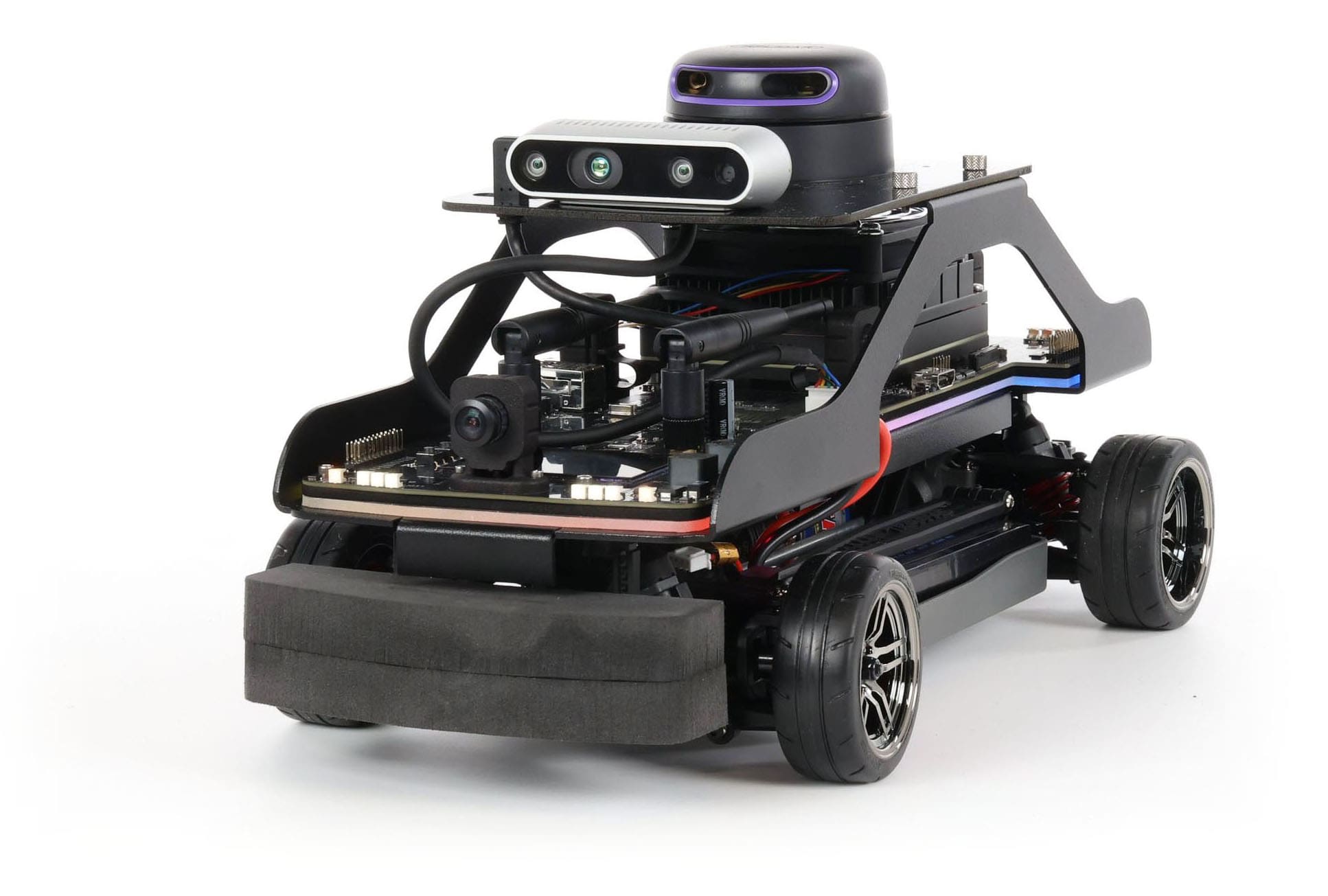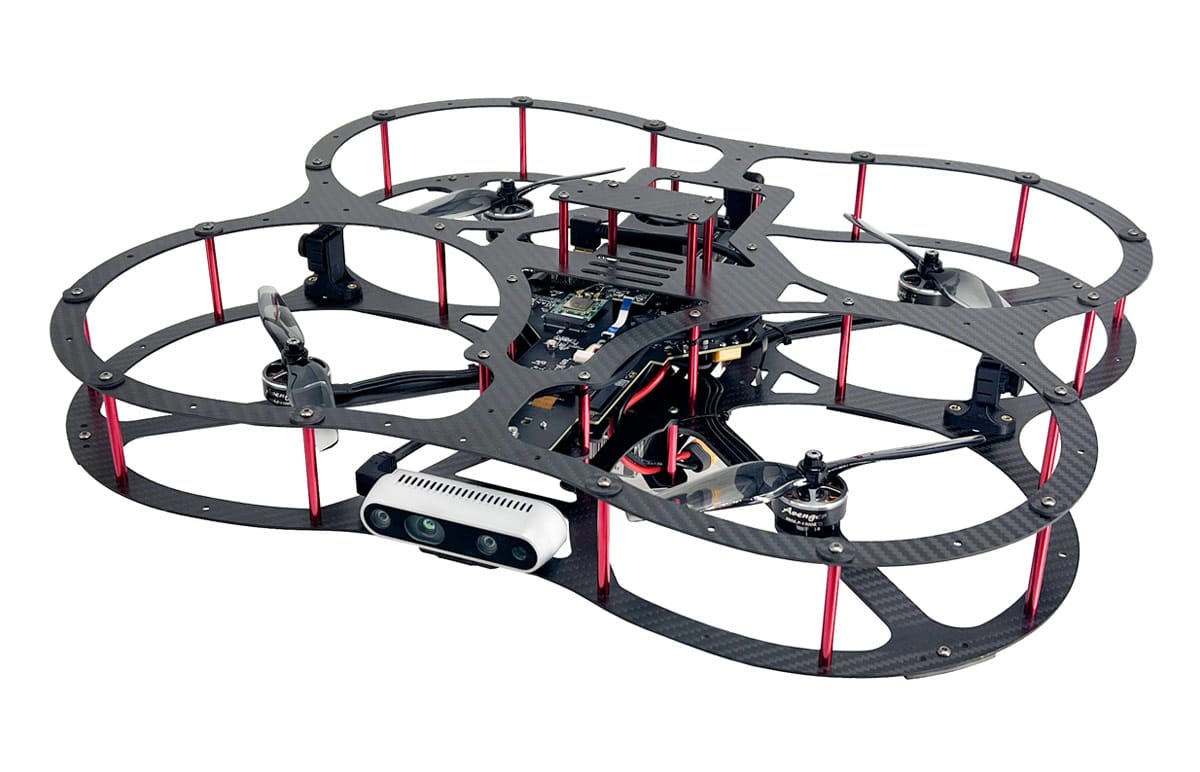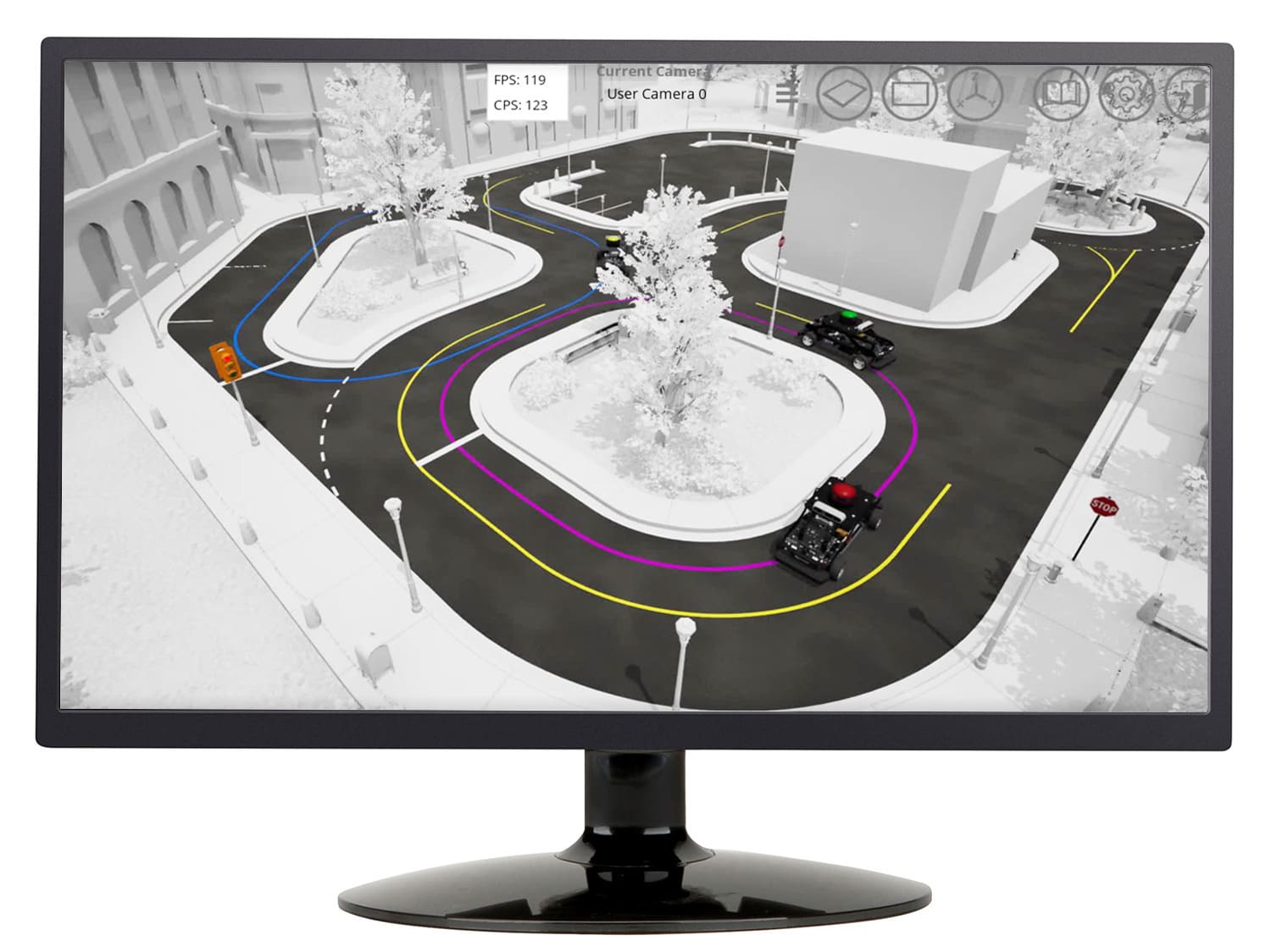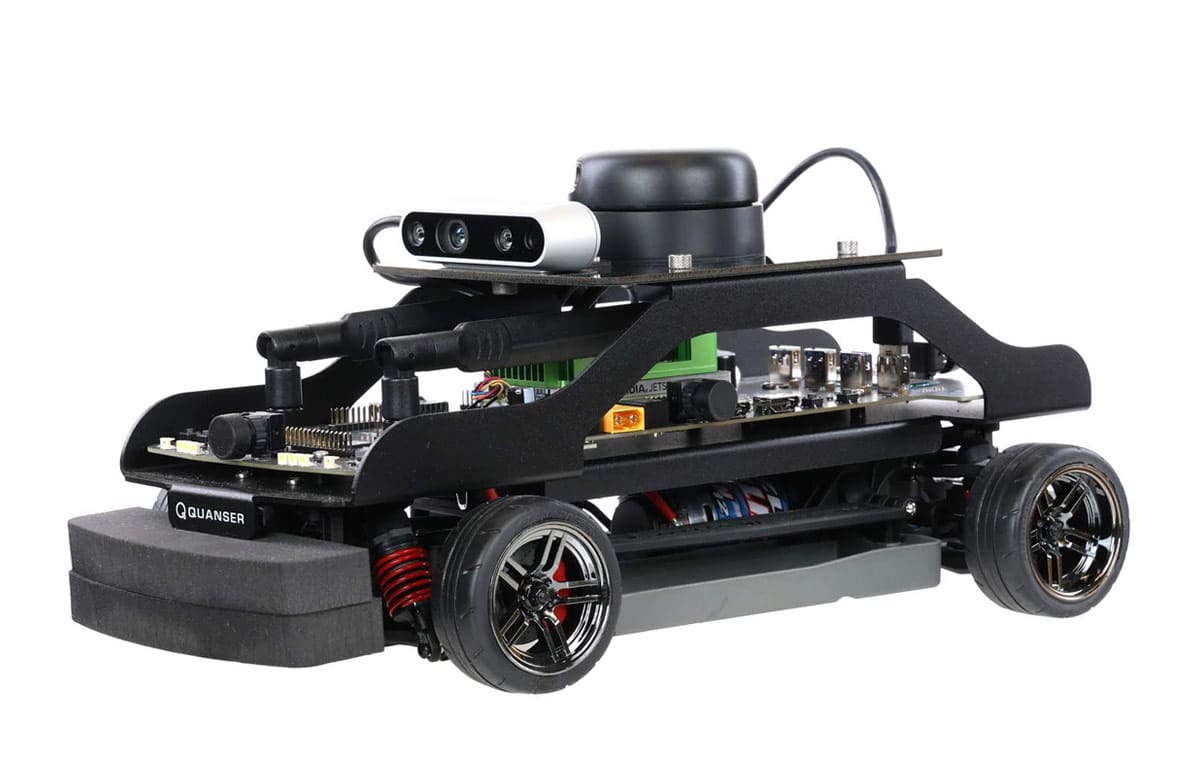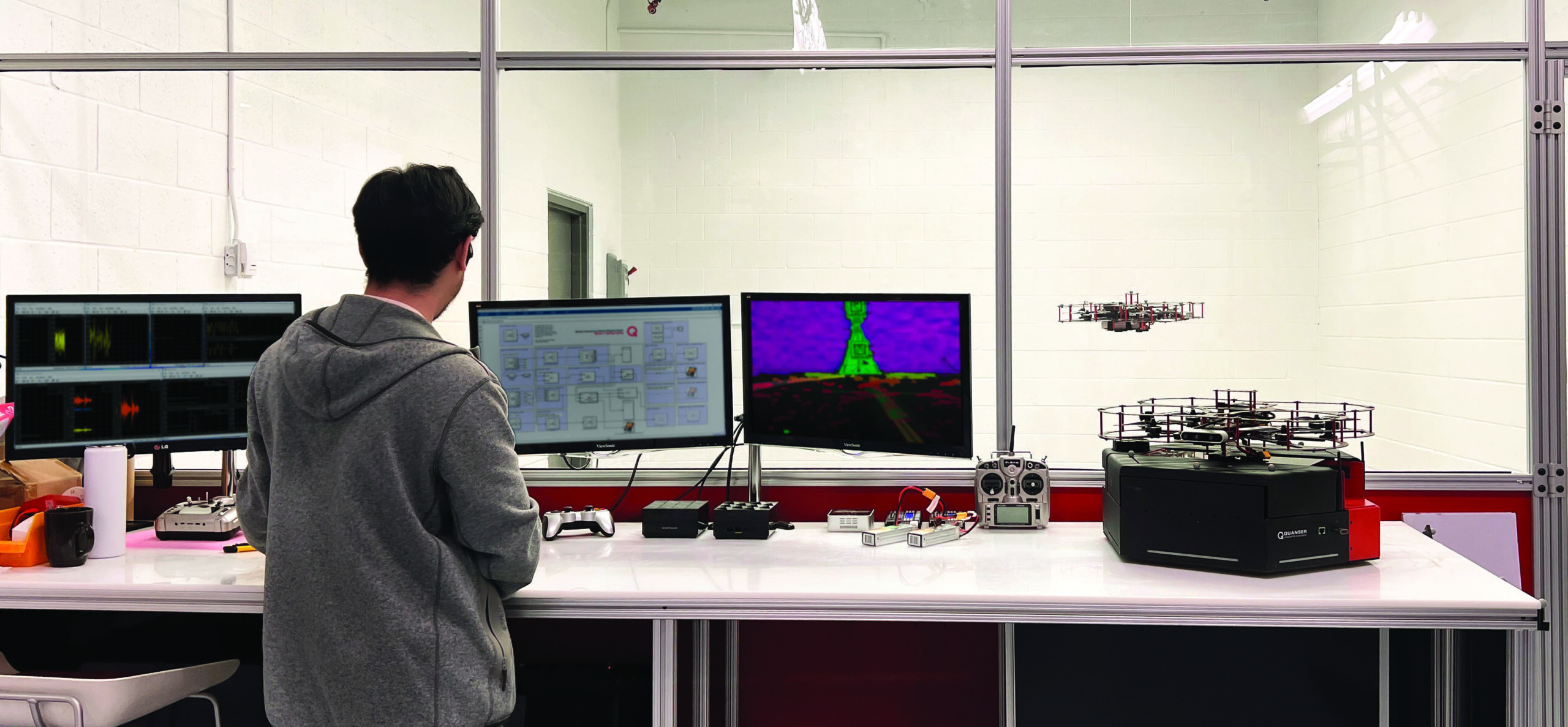Self-Driving Car Studio
A multi-disciplinary turnkey laboratory that can accelerate research, diversify teaching, and engage students from recruitment to graduation.
The Quanser Self-Driving Car Studio is the ideal platform to investigate a wide variety of research topics for teaching and academic research in an accessible and relevant way. Use it to jump-start your research or give students authentic hands-on experiences learning about the essentials of self-driving. The studio brings you the tools and components you need to test and validate dataset generation, mapping, navigation, machine learning, and other advanced self-driving concepts at home or on campus.
Check ACC Self-Driving Car Student Competition to get more information on how Quanser and QCar empowering the next generation of engineers.
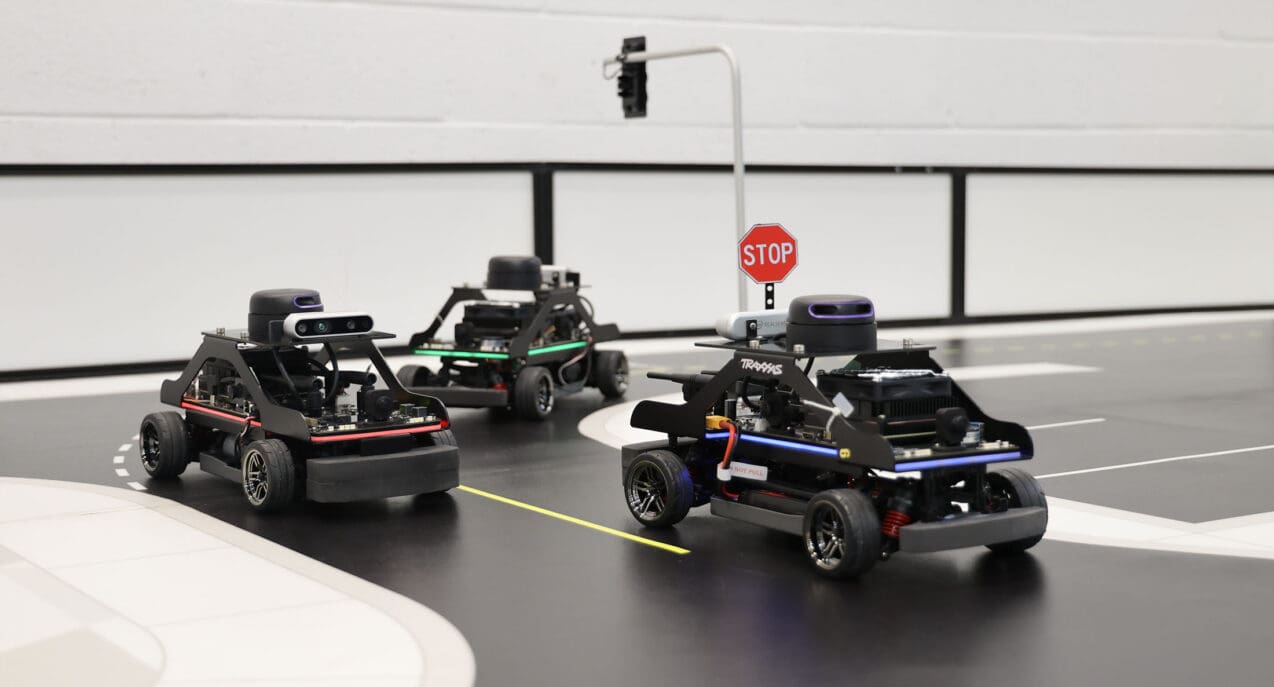
Product Details
At the center of the Self-Driving Car Research Studio, the QCar 2, is an open-architecture scaled model vehicle, powered with NVIDIA® Jetson™ Orin AGX supercomputer, and equipped with a wide range of sensors, cameras, encoders, and user-expandable IO.
Relying on a set of software tools including Simulink®, Python™, TensorFlow, and ROS, the studio enables researchers to build high-level applications and reconfigure low-level processes that are supported by pre-built modules and libraries. Using these building blocks, you can explore topics such as machine learning and artificial intelligence training, augmented/mixed reality, smart transportation, multi-vehicle scenarios and traffic management, cooperative autonomy, navigation, mapping and control, and more.
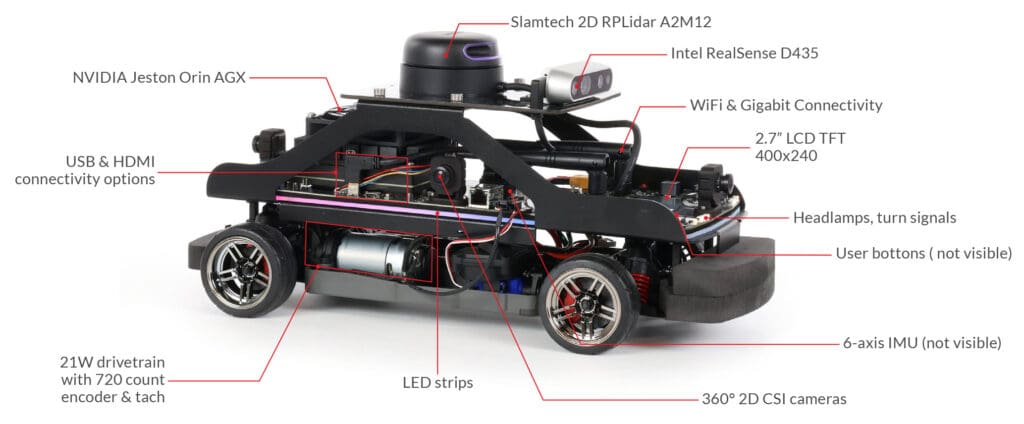
| Dimensions | 39 x 21 x 21 cm |
| Weight (with batteries) | 2.7 kg |
| Power | 3S 11.1 V LiPo (3300 mAh) with XT60 connector |
| Operation time (approximate) | ~2 hours 11 m (stationary, with sensors feedback) |
| 30 m (driving, with sensor feedback) | |
| Onboard computer | NVIDIA® Jetson™ Orin AGX |
| CPU- 2.2 GHz 8-core ARM Cortex-A78 64-bit | |
| GPU- 930 MHz 1792-CUDA/56-TENSOR cores | |
| Memory- 32GB 256-bit LPDDR5 @ 204.8 GB/s | |
| LIDAR | LIDAR with 16k points, 5-15 Hz scan rate, 0.2-12m rang |
| Cameras | Intel D435 RGBD Camera |
| 360° 2D CSI Cameras using 4x 160° FOV wide angle lenses, 21fps to 120fps | |
| Encoders | 720 count motor encoder pre-gearing with hardware digital tachometer |
| IMU | 6-axis IMU (gyroscope & accelerometer) |
| Safety features | Hardware “safe” shutdown button |
| Auto-power off to protect batteries | |
| Expandable IO |
* **Subject to change |
| Connectivity | Wi-Fi 802.11a/b/g/n/ac 867 Mbps with dual antennas |
| 1x HDMI | |
| 1x 10/100/1000 BASE-T Ethernet | |
| Additional QCar feautres | Headlamps, brake lights, turn signals and reverse lights |
| Individually programmable RGB LED strip (33x LEDs) | |
| Dual microphones | |
| Speaker | |
| 2.7″ LCD TFT 400×240 for diagnostic monitoring |
Vehicles
- QCar 2*
- QCar*
- (single vehicle or fleet)
Ground Control Station
- High-performance computer with RTX graphics card with Tensor AI cores
- Three monitors
- High-performance router
- Wireless gamepad
- QUARC Autonomous license
Studio Space
- Driving map featuring intersections, parking spaces, single & double lane roads and roundabouts
- Supporting infrastructure including traffic lights, signs and cones
| Supported Software and APIs | QUARC for Simulink® |
| Quanser APIs | |
| TensorFlow | |
| Python™ 2.7 / 3 & ROS 2 | |
| CUDA® | |
| cuDNN | |
| TensorRT | |
| OpenCV | |
| Deep Stream SDK | |
| VisionWorks® | |
| VPI™ | |
| GStreamer | |
| Jetson Multimedia APIs | |
| Docker containers with GPU support | |
| Simulink® with Simulink Coder | |
| Simulation and virtual training environments (Gazebo and Quanser Interactive Labs ) | |
| Multi-language development supported with Quanser Stream APIs for inter-process communication | |
| Communication |
